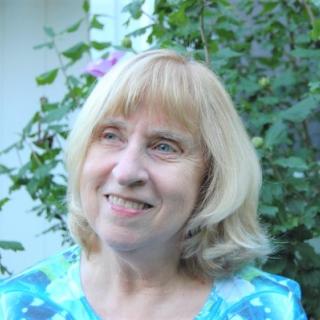In 1970, if Johnny had a disability such as deafness, blindness or mental retardation, he most likely stayed home or his parents institutionalized him. At that time, schools only educated one in every five children with disabilities.
At Nathan Eckstein Middle School in Seattle, almost a third of the students in each class receive special education. All students study the same topic, but those with disabilities may have modified assignments, shorter books or more time to compete their work.
“If a special-education student gets to start his day in a general-education classroom where his peers are, it feels natural and right,” says Michelle Corker-Curry, assistant chief academic officer for Seattle Public Schools. “Of course, it must be deemed appropriate for the child. Our goal is for the special-education students to be in the least restrictive environment.”
Seattle schools currently serve 6,100 special-education students who range in age from birth to 21. Many of those are grouped according to their disability. For example, what is called the severe/profound or critical-care children who need diapering and/or tube feeding attend school at Green Lake Elementary. Because of their needs, they are housed together.
Students with similar individualized education plans (IEPs) and goals are also placed together. An IEP — which every special-ed or disabled student must have — is a detailed plan and a written document that describes in detail the goals, objectives and specific programs that student will follow.
The plan is created with input from the child’s parents (in some cases, the child himself), and each teacher and specialist involved with that child. Every year, IEPs are evaluated to see what progress has been made and are then revised as needed.
Seattle Public Schools’ plan
“Every student achieving, everyone accountable” is the focus of Seattle Public Schools’ new strategic plan, adopted by its school board in June, and titled “Excellence for All.” To determine how to best meet that goal, Superintendent Maria Goodloe-Johnson commissioned a series of external reviews and recommendations, including a review of the district’s special-ed program. The district is currently studying those recommendations and this year will decide which to adapt.
According to the recommendations, special-ed students will be assigned to a school and a general-education classroom. Service providers will come to the school to work with each student. A child with autism, for example, might see an occupational therapist, school nurse, school psychologist, a general-education teacher and a special-education teacher.
“We will be determining the school assignment for these children by their IEPs,” says Corker-Curry. “When you have a child with a disability, you need to make sure that he is not only ready to be included in a general education classroom, but that he can also be included in camp activities and on the soccer field.”
A child with an emotional behavior disorder who can only be in general education for a short time during the day will most likely have modified assignments because of his disability, Corker-Curry says. “If the general-education students are taking a 50-question multiple-choice quiz, he may take a 25-question multiple-choice quiz.”
The district plans to announce school assignments for special-ed students prior to the 2010-11 school year and implement the strategic plan’s recommendations at that time.
According to Corker-Curry, parents will see special education at the forefront under the guidance of superintendent Goodloe-Johnson.
“When the student school-assignment plan is under way, then we will be working on what the best inclusion practices will look like,” says Corker-Curry.
Heather Larson is a freelance writer in Tacoma who frequently writes about health and parenting issues.
To find out . . .
. . . if a student meets the federal and state requirements for special education, visit www.k12.wa.us and under “programs,” click on “special education.”
The Academy for Precision Learning
Morgan Brewer, who is 8 years old and has autism, attends the Academy for Precision Learning, an independent school in Seattle for students in kindergarten through fifth grade. The school, now in its second year, currently serves 11 students. Two of those children are considered “typical” (meaning they do not have special needs), while nine of them have autism.
“We want to prove that inclusion [having traditional students and special-education students in the same classroom] works,” says Erin Brewer, Morgan’s mother and one of the founding board members of the academy. “Our children really benefit from the social interaction with typical children.”
Alison Moors, academic director for the Academy for Precision Learning, believes that inclusion is the best approach for children with autism. “Kids with autism learn from typical kids. If the expectations for them are the same as for those of a general-education student, then the students with autism mostly meet those expectations,” says Moors. “When these children get older, they will need to get along in their jobs and while riding the bus.”
The Academy for Precision Learning moved into a building in the University District this year. Moors plans to take advantage of the new location by partnering with the neighborhood YMCA for physical education activities.
“It’s very high energy here and we have a lot of fun,” says Moors.
To find out more about the Academy for Precision Learning, visit www.aplschool.org. Scholarships are available for general-education students.




